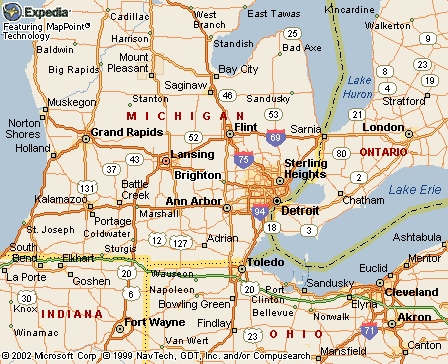|
|
Canku Ota |
|
|
(Many Paths) |
||
|
An Online Newsletter Celebrating Native America |
||
|
April 6, 2002 - Issue 58 |
||
|
|
||
|
Native American Program a Big Draw |
||
|
by Tom Tolen Ann
Arbor News Staff Reporter
|
||
|
credits: art by
R.C. Gorman
|
 BRIGHTON,
MI - "Every few weeks, when regular classes are done, Brendan Ostrom
returns to the classroom at Brighton High School for lessons he doesn't
find during the traditional school day. BRIGHTON,
MI - "Every few weeks, when regular classes are done, Brendan Ostrom
returns to the classroom at Brighton High School for lessons he doesn't
find during the traditional school day.
And tradition - Native American tradition -is part of the curriculum for Brighton's Indian Education program. "I learned stuff I never knew before about my ancient heritage," said Brendan, 10, a Maltby Middle School seventh-grader. "I learned about Native American artists, and also learned the Navajo language was a major part of World War II; it was the only code the Japanese couldn't break." The U.S. military used the Navajo Code Talkers extensively in from 1942-45. According to the U.S. Department of Navy's history center in Washington, the Navajo language answered military requirements for an indecipherable code: It is unwritten, extremely complex, has no alphabet and has syntax, tonal qualities and dialects that make it unintelligible without extensive experience or training. The Japanese, though considered skilled code breakers, never understood it. Of course, that's just one of many things Brendan and other Brighton students with American Indian backgrounds have learned in the program's 20 years. It includes a series of classes, about two hours each, held Wednesday evenings throughout the school year, and a few special projects and field trips. "I think it's a very rewarding program; we don't have the elders to pass along the information," said parent Jeanette Mason. At a recent session, Jim Miller of Mikado, in Alcona County, taught the children to make ropes and birch bark knife sheaths. At another, instructor Linda Lehman told students about Navajo artist R.C. Gorman. The students also have learned traditional Navajo crafts, such as basket-weaving. And in June, they are headed to Fort Michilimackinac in Mackinaw City and the Ojibwa museum in Sault Ste. Marie. The program is funded through Title IX and the U.S. Department of Education's Office of Indian Education. The grant is small, $27,000 this year, but many say program director Teresa Murray gets the most possible bang out of her buck. "It offers my kids a lot more than I could offer them myself," said Brendan's mother, Maureen Ostrom. "We're quite proud of the fact that our district is making the effort." Enrolled in the program this year are 110 of the 130 Brighton students - 1.8 percent of the 7,039-student district - who identified themselves as of Native American heritage. While students must be at least part-Indian to enroll, there is no proof required as long as they can identify their tribe. Brighton Assistant Superintendent for Curriculum Bonnie Riutta said she believes strongly in the importance of continuing the program despite dwindling federal funding. "Brighton is so culturally undiverse that it's important to understand and respect other cultures," Riutta said. "It's a chance to educate more young people about our true history." The academic instruction comes from Native American authors, rather than typical classroom texts, so that the native history is presented from the Indian perspective. "The focus of the program is education," said Murray, who has been with the program for 15 years and director since 1992. Murray also is half Algonquin, on her mother's side. "The kids aren't getting the same perspective on history in the classroom" as they get here, she said. Brighton is one of just two districts in Livingston County that offer such a program. Fowlerville is the other, and both are part of a consortium called "Gathered Feathers," a group of four southeastern Michigan districts with Indian Education programs. The other consortium members are Walled Lake and Hazel Park."
|
|
|
||
|
|
||
| Canku Ota is a free Newsletter celebrating Native America, its traditions and accomplishments . We do not provide subscriber or visitor names to anyone. Some articles presented in Canku Ota may contain copyright material. We have received appropriate permissions for republishing any articles. Material appearing here is distributed without profit or monetary gain to those who have expressed an interest. This is in accordance with Title 17 U.S.C. section 107. | ||
|
Canku Ota is a copyright © 2000, 2001, 2002 of Vicki Lockard and Paul Barry. |
||
|
|
|
|
|
The "Canku Ota - A Newsletter Celebrating Native America" web site and its design is the |
||
|
Copyright © 1999, 2000, 2001, 2002 of Paul C. Barry. |
||
|
All Rights Reserved. |
||

